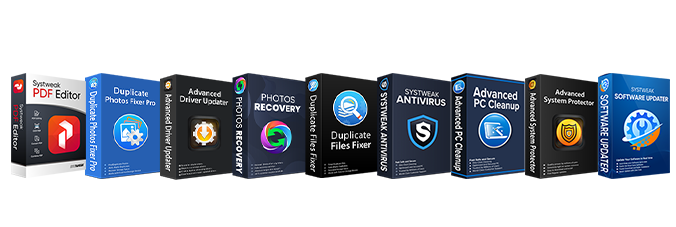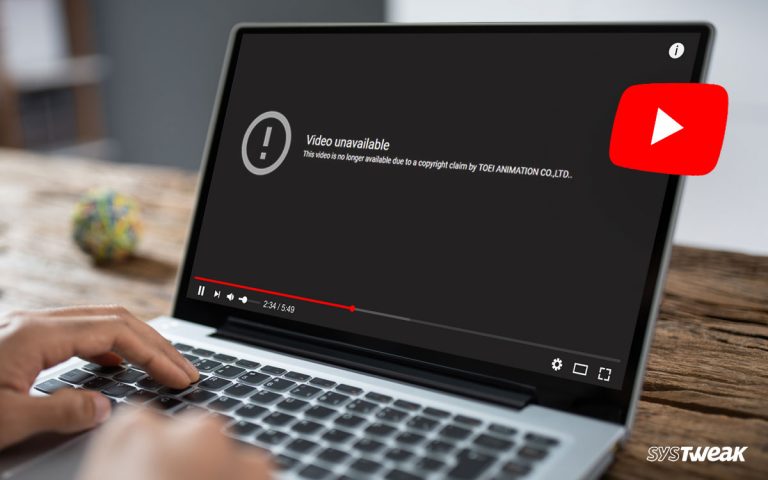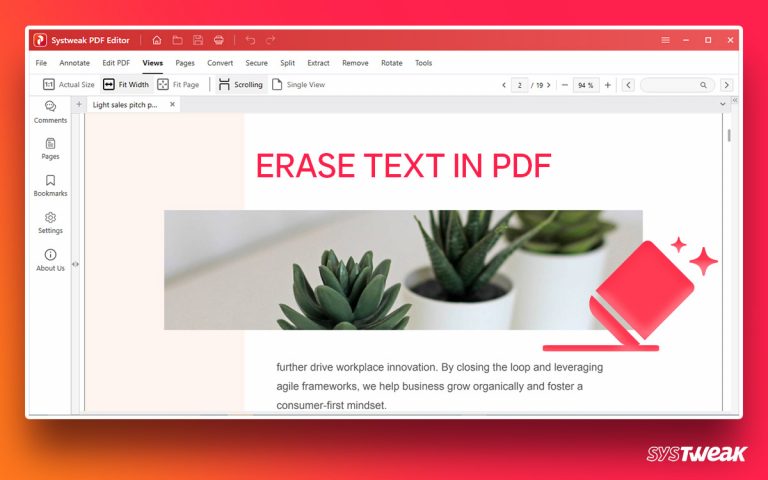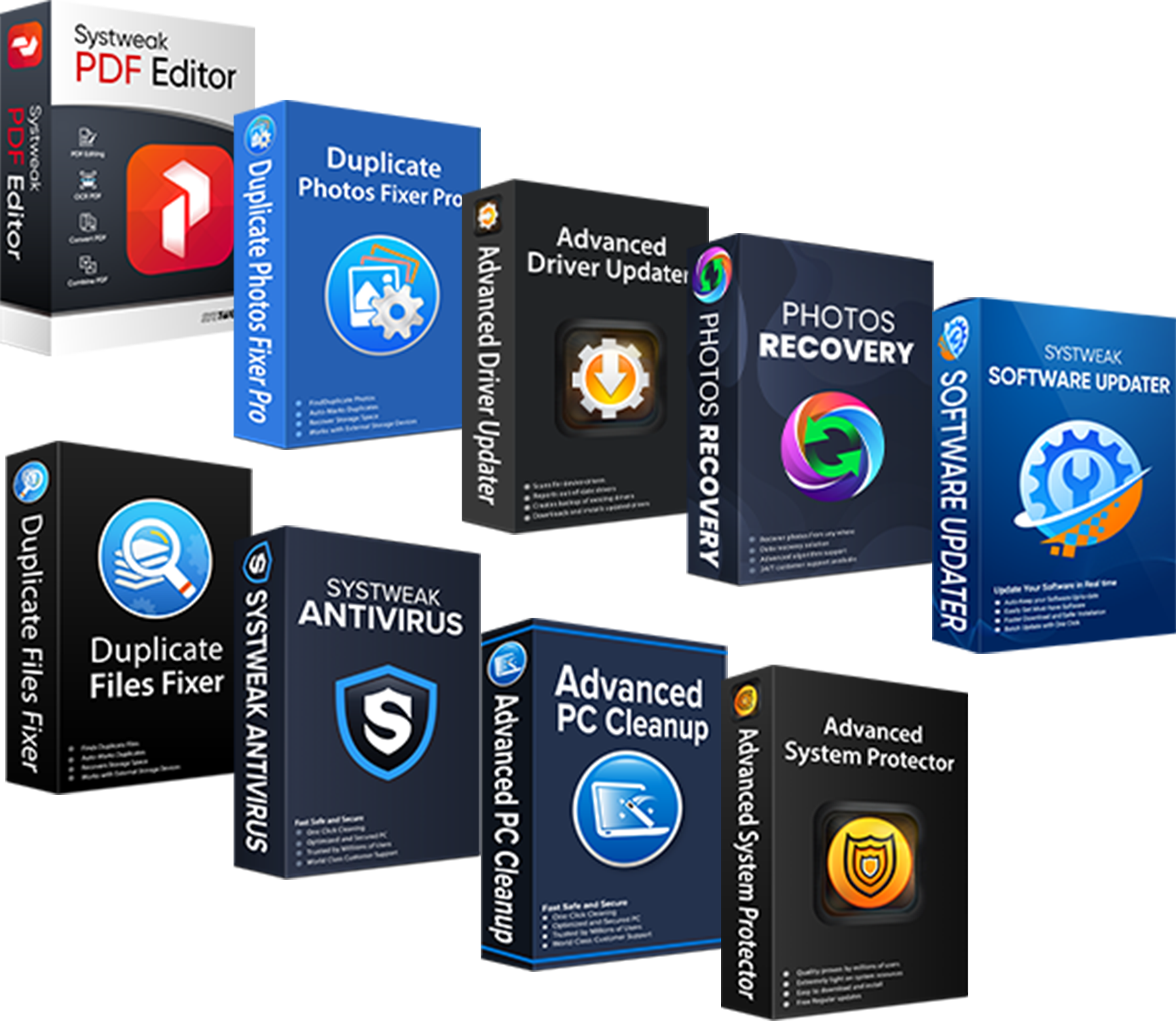Want to remove OneDrive, the cloud storage service, from your PC? Here’s how to uninstall it.
50% OFF

BLACK FRIDAY OFFERS
Unlock Black Friday Mega Savings — Systweak Tools FLAT 50% OFF!
Like its rivals, Microsoft wants to keep its users glued to the Microsoft ecosystem; because of this, Windows 11 and 10 comes integrated with OneDrive. Enabled by default, when you sign on with a Microsoft account, it automatically syncs your documents.
However, many users don’t like this as the cloud service consumes system resources slowing down PC performance. If this bothers you, too, or you don’t want to use cloud storage to save data and want to remove OneDrive from the PC, you are at the right place.
This troubleshooting guide will explain the best and most effective ways to uninstall and disable OneDrive from Windows.
What is OneDrive?
Note – At the time of writing, Microsoft account users get 5 GB of free storage.
Launched in August 2007, OneDrive is Microsoft’s cloud service that helps sync data between devices. It offers some powerful features:-
- Sync pictures automatically to the cloud.
- Upload, create, edit, and share Word, Excel, PowerPoint, and OneNote documents directly from a browser using the Office Online feature.
- Share files and folders with anyone uploaded on OneDrive.
These features make OneDrive useful; however, there are situations when users might want to uninstall or disable it. If you have no clue about how to uninstall OneDrive completely, read the following part.
How to Uninstall OneDrive on Windows 10
Windows does not make uninstalling OneDrive easy. However, the Windows 10’s Creators Update makes removing OneDrive from your PC easy.
Recommended Method to Completely Uninstall OneDrive
If you have tried uninstalling OneDrive but can’t manually uninstall it, use the Uninstall Manager offered by Advanced PC Cleanup. This best, OneDrive uninstall tool helps easily remove OneDrive without leaving any traces.
Also, you can use it to clean junk files, temporary files, and other unwanted data that slow down system performance.
To use it, follow the steps below:
1. Download and install Advanced PC Cleanup
2. Run the best app uninstaller.

3. Click Uninstall Apps options present in the left pane.

4. Wait for it to scan the system and list down installed applications.
5. Look for Microsoft One Drive and click the Bin icon.

6. When prompted, click Yes to complete uninstallation.

These simple steps will help uninstall OneDrive from Windows 10 easily. However, if you want to do it manually, read further.
Steps to Disable OneDrive – Windows Pro and Enterprise Users
Way 1 – Disabling OneDrive Via Group Policy
If you are a Windows 10 Enterprise, Professional, or Education user, the simplest way to disable OneDrive is to head to Local Group Policy Editor. To learn how to use it, follow the step-by-step guide below:
1. In the Windows search bar, type gpedit.msc > Enter

2. Under Local Computer Policy, look for Computer Configuration > Administrative Templates > Windows Components.

3. Look for OneDrive and double click Prevent the usage of OneDrive for file storage from the right pane.

4. This will open the settings window. Here click the radio button next to Enabled > Apply > Ok.

5. Doing so will completely disable access to OneDrive, and it will also be removed from File Explorer.
Way 2 – Disabling OneDrive Through Settings
1. Click the OneDrive icon from the taskbar.
2. Right-click it and open OneDrive.
Note -If you cannot see the OneDrive icon in the taskbar, click the Show Hidden icon and select OneDrive. However, if this doesn’t work, use the search field to look for OneDrive.
3. From the context menu, choose More > click Settings.
4. Go to Settings > uncheck Start OneDrive automatically when I sign into Windows.
5. Click Account tab > Unlink this PC > click Unlink account and continue.

Enter your email address in the popup window and wait for the process to complete. This will log you out of One Drive, and the sync will stop on Windows 11 and 10.
Way 3 – Disable OneDrive Through Windows Registry
This method involves using Registry Editor. However, since the tool is powerful and editing involves risk to be safe, we suggest taking a backup of the registry. Once you have backed up the registry editor using Registry Cleaner, you can proceed with the steps below:
- Press Windows + R to open the Run window.
- In the Run window, type regedit and press Enter key.
- Now, navigate to HKEY_LOCAL_MACHINE\SOFTWARE\Policies\Microsoft\Windows

- Right-click Windows key and select New > Key.

- Name the new key as OneDrive. Select it > right-click on the empty area > choose New > DWORD (32-bit) Value and continue.

- Name the new key DisableFileSyncNGSC. Then double-click on it and change the Value Data to 1.

When done, close the registry editor and restart the PC. This will completely disable OneDrive.
However, if you are not okay with disabling OneDrive and want to uninstall it, follow the steps below:
Manual Ways to Uninstall OneDrive
Way 1 – Uninstalling OneDrive Through Command Prompt
1. In the Windows search bar, type Command Prompt > right-click the best result > and select Run as administrator from the context menu.

2. Type taskkill /f /im OneDrive.exe and hit Enter key. This will kill the OneDrive process.
3. Thereafter, type the following command based on the version of the operating system you are using:
64-bit user
%SystemRoot%\SysWOW64\OneDriveSetup.exe /uninstall
32-bit user
%SystemRoot%\System32\OneDriveSetup.exe /uninstall
This will remove the OneDrive app from your Windows.
Way 2 – Uninstall OneDrive Through Programs and Features
If you are Windows 10 Home user, follow the steps below:
1. Press Windows + R > type control > Ok
2. Here, click the down arrow next to View by > select Small icons
3. Click Programs and Features

4. Look for Microsoft OneDrive > hit Uninstall.
Windows will uninstall OneDrive and the icon will be removed from the notification area.
Tip : In the future, if you want to reinstall OneDrive, head to C:WindowsSysWOW64 folder (64-bit) and C:WindowsSystem32 folder (32-bit) version of Windows 10. Look for OneDriveSetup.exe, double-click it, and reinstall OneDrive.
Additional Tip:
How to temporarily pause data sync OneDrive on Windows 10
If you think you might use OneDrive in the future, you can pause the sync instead of uninstalling or disabling it. To do so, follow the steps below:
1. Click the OneDrive icon present system tray > Help & Settings > select Pause Syncing > select the time 2,8 or 24 hours for which you want to pause using OneDrive.

Doing so will disable OneDrive for the selected time frame. Following the same steps, you can resume OneDrive syncing.
FAQ
Q1. Should I Uninstall OneDrive?
The answer to this varies from user to user. If you are not using OneDrive and want to remove it, you can uninstall it. However, if you use it but don’t want to sync data any longer, you can disable or pause the data sync instead of uninstalling it.
Q2. What happens if I Uninstall OneDrive?
When you uninstall OneDrive from the PC, it will stop syncing data. However, the files uploaded to the cloud storage will still be accessible when you sign in at OneDrive.com.
Q3. How can I delete files from OneDrive without deleting them from the PC?
1. Press Windows + E to open File Explorer.
2. Click the OneDrive icon.
3. Go to the file or folder in question.
4. Right-click on it and click on Free up space.
This will delete local copies of selected files and folders, and you will have free space on a hard drive.
Q4. How to free up space on OneDrive?
To free up space on OneDrive, follow these steps:
1. Open OneDrive.
2. Select Recycle bin in OneDrive and empty it.
Alternatively, view Manage your OneDrive storage, see what takes up space, and clear unwanted files.
Q5. Should I disable OneDrive?
If you are using an alternate cloud service or struggling with a poor internet connection, disabling OneDrive might benefit you.
Successfully Uninstalled OneDrive from Windows
Following the abovementioned steps, you can easily remove OneDrive from the PC. Of course, the manual steps are time-consuming and require patience. If you are not okay with it, use Advanced PC Cleanup, one of the best optimizers and uninstallers to clean pc, to remove any apps. Furthermore, using it, you can perform other tasks like –
- Cleaning invalid registry entries
- Managing startup items
- Cleaning old downloads
- Protection windows from malware infections
- Securing your information from identity theft
- Clearing temporary files
- Removing junk and other cluttered data
This will help boost performance and fix various common Windows errors. We hope you will give it a try and will keep your system tuned up. If you have any questions regarding the product, contact our support team at support@systweak.com. They will answer all your queries promptly.
Do share your feedback and suggestions in the comments section.
Next Read : How to Remove Leftover Files after Uninstalling Software





